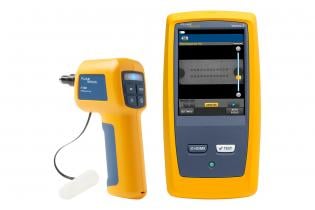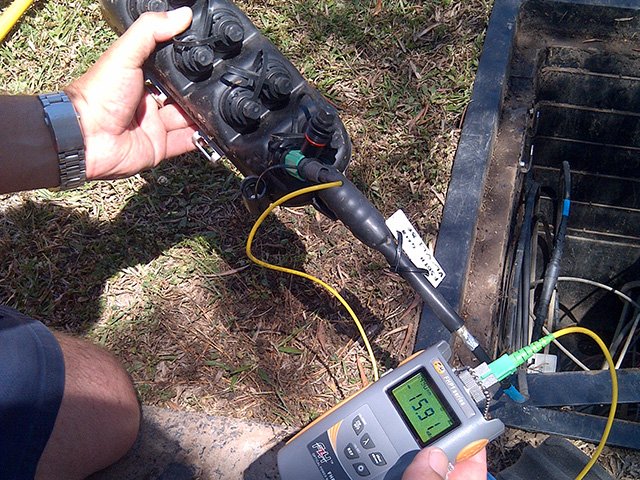The Function of Optical Fiber Screening in Ensuring Quality and Performance in Connectivity Solutions
In today's quickly developing digital landscape, the value of optical fiber screening can not be overemphasized, as it offers as a cornerstone for making sure the quality and performance of connectivity remedies. As modern technology proceeds to breakthrough, the future of optical fiber screening poses appealing challenges and chances that warrant closer evaluation.
Importance of Optical Fiber Screening
The importance of optical fiber testing can not be overstated in making certain the integrity and efficiency of interaction networks. As the foundation of modern telecommunications, optical fibers assist in high-speed information transmission, making their dependability important to operational success. Testing acts as a positive measure to determine potential problems such as signal loss, attenuation, and physical damages, which can compromise network efficiency.
Normal testing enables the verification of installation quality and the detection of flaws that could affect data integrity - optical fibre diameter analyser. By employing rigorous screening methods, network drivers can reduce the threats connected with network failings, including downtime and monetary losses. Optical fiber testing makes certain compliance with industry requirements and guidelines, boosting the overall quality of solution provided to end-users.
Inevitably, the methodical evaluation of optical fibers adds to the durability and efficiency of communication systems. It enables stakeholders to make informed decisions relating to maintenance, upgrades, and troubleshooting. In a landscape where information is significantly important, prioritizing optical fiber screening is necessary to sustaining durable and efficient connectivity services, thus sustaining the needs of contemporary electronic environments.
Types of Optical Fiber Tests
Different testing approaches are utilized to guarantee the functionality and dependability of optical fibres within communication networks. These examinations can be extensively classified into two main types: installation tests and upkeep examinations.
Installment tests are carried out instantly after the installation of optical fiber wires to verify their efficiency and stability - fibre testing equipment. One of the most usual setup examinations include Optical Time-Domain Reflectometry (OTDR) tests, which assess the top quality of the fiber by identifying faults or breaks, and end-to-end loss tests, which measure the overall optical loss from one end of the fibre to the other
Maintenance examinations, on the other hand, are done periodically to ensure recurring efficiency and identify possible problems gradually. These include visual examination, which look for physical damages or incorrect installations, and continuity tests, which verify that the signal can travel through the fiber without interruption.
Additionally, progressed tests such as Polarization Setting Dispersion (PMD) and Chromatic Diffusion (CD) tests can be conducted to review the fiber's performance under numerous conditions. By using these varied screening techniques, professionals can preserve high standards of top quality and reliability in optical fiber networks.
Benefits of Routine Testing
Routine screening of optical fibers plays a vital duty in maintaining the total performance and dependability of interaction explanation networks. By conducting routine assessments, organizations can guarantee that their fiber optic installments satisfy industry standards and operate effectively. This aggressive technique assists to determine prospective weaknesses and deterioration with time, enabling prompt treatments prior to problems intensify.

Cost-effectiveness is another benefit. By dealing with minor concerns early, organizations can prevent the high prices connected with major repairs or system failures. Normal screening additionally fosters compliance with regulatory needs, making sure that the network follows necessary security and performance requirements.
Common Concerns Recognized
Determining usual problems in optical fiber networks is vital for maintaining ideal efficiency and integrity. Various aspects can add to interruptions, consisting of physical damage, bad installment practices, and environmental impacts.
Physical damages, such as bends, breaks, or abrasions, can considerably weaken signal quality. Incorrect installment techniques, including excessive tension or poor securing of cable televisions, might bring about increased you could try this out depletion and loss of connection. In addition, environmental elements such as temperature variations, dampness access, and rodent interference can compromise the stability of the fiber.
Connector issues likewise regularly emerge, with improper alignment or contamination resulting in increased insertion loss. Splicing errors can introduce significant signal degradation if not performed with precision.

Resolving these typical problems via normal optical fibre screening not just enhances network reliability yet also optimizes general performance, ensuring that connectivity solutions continue to be durable and reliable.
Future Patterns in Testing
As the need for high-speed connectivity remains to rise, the future of optical fiber testing will increasingly concentrate on automation and advanced analytics. The assimilation of synthetic intelligence (AI) and maker discovering (ML) in screening procedures will allow more reliable data evaluation and predictive maintenance, reducing downtime and boosting overall network dependability. Automated screening services will certainly improve the examination and accreditation of fiber networks, minimizing human mistake and increasing testing throughput.
Another significant trend is the adoption of remote testing innovations. As the implementation of fibre networks broadens into remote and underserved areas, remote testing capabilities will allow professionals to monitor and diagnose network conditions without physical presence, thereby reducing functional prices and boosting feedback times.
In addition, there will certainly be a change towards more comprehensive testing criteria that incorporate not just conventional loss measurements but additionally efficiency metrics such as latency and data transfer usage. Learn More Here This holistic strategy will certainly assist in far better network monitoring and optimization methods.
As these trends evolve, the optical fiber testing landscape will certainly not just enhance the quality and efficiency of connection services yet likewise support the expanding complexities of modern-day interaction networks.
Final Thought
In final thought, optical fibre screening functions as a basic element in maintaining the honesty and efficiency of interaction networks. By systematically analyzing different parameters with established testing methods, prospective issues are identified and fixed, making certain optimal efficiency. The ongoing dedication to regular testing not just enhances information transmission but additionally aligns with market standards, promoting integrity in network infrastructures. As innovation evolves, the importance of cutting-edge testing methods will certainly remain to grow, more progressing connectivity options.